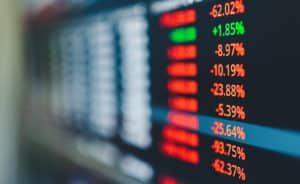 Daniel Morris, chief market strategist, BNP Paribas Asset Management: The global economy seems on an inevitable march towards recession. The causes are well-known: central banks aggressively raising policy rates to reduce inflation, an energy shock in Europe, zero-Covid policies and a shaky property market in China. Much of Europe is already in recession. We expect one to begin in the US in the third quarter of 2023, and while China’s growth will likely not turn negative, it will be below historic levels.
Daniel Morris, chief market strategist, BNP Paribas Asset Management: The global economy seems on an inevitable march towards recession. The causes are well-known: central banks aggressively raising policy rates to reduce inflation, an energy shock in Europe, zero-Covid policies and a shaky property market in China. Much of Europe is already in recession. We expect one to begin in the US in the third quarter of 2023, and while China’s growth will likely not turn negative, it will be below historic levels.
One can easily think of ways in which the situation could yet worsen: a breakdown in a key financial market due to the rapid rise in interest rates, a cold winter and blackouts in Europe, or a flare-up in geopolitical tensions between the US and China. Europe is facing an energy shock unlike anything the region has seen since the OPEC price increases in the 1970s. Even though gas prices have moderated of late, they are still 10 times higher than the average in 2019. Inflation is in double digits in some countries, consumer sentiment has collapsed, and demand is weakening along with disposable income. Nonetheless, we believe headline inflation has peaked and will return to the ECB’s 2% target in 2024.
Jim Kwiatkowski, CEO, LTX: The capital markets industry experienced a particularly volatile 2H 2022 as investors grappled with a looming recession and peak inflation. This year will be remembered as the year when market participants were forced to adjust to a drastically different environment due to a hawkish approach from the Fed, the war in Ukraine and persistent supply chain issues altering the trading landscape.
The US corporate bond market was not unscathed by these challenges, which will continue to have ripple effects well into 2023. We expect the Fed’s tightening of monetary policy to continue, with the process ending in the first half of 2023 and interest rates and inflation remaining relatively high throughout the year. We expect high rates and recessionary concerns to continue to hold back the new issue market. Amidst these conditions, the availability of secondary market liquidity will be a key challenge that market participants will continue to solve for in 2023. We expect to see electronic bond trading reach record levels with the employment of innovative artificial intelligence (AI) and technology that increase transparency while minimizing information leakage. We also anticipate the further adoption of advanced trading tools for more efficient e-trading of large orders.
Matt McLoughin, head of trading, LionTrust: “Just when I thought I was out, they pull me back in.” After an interesting covid-filled, couple of years, it is fair to say that 2022 did not disappoint with the number of challenges it brought for the market. I think that 2023 will continue to be an “interesting” trading environment, but one that will bring new opportunities. As the guardians of investors’ financial futures, we have a duty to invest responsibly and with that in mind, I see ESG factors remaining front and centre of investors’ minds next year. I am hopeful that the increase in global interest rates that we have experienced will achieve its aim of controlling inflation and that the cost of living crisis doesn’t last as long as expected. I am very much looking forward to Ireland winning the Rugby World Cup on the 28th October 2023!
Jason Xavier, head of EMEA ETF capital markets, Franklin Templeton: We expect 2023 to be a bumpy year for financial markets globally. We think it will be a year for playing defence, optimising income, and tactically looking for a weakening dollar to potentially allocate to emerging markets (EM). My main prediction centres around this defensive play. As such, we believe multi-factor smart beta ETFs, especially those focused on quality and income generating strategies, will outperform their relative AUM growth from this year as the decade of “cheap” money and record low interest rates is gone. The by-product of such monetary policy over the last decade has certainly benefited ETFs and index funds and in particular market capitalisation weighted schemes, often heavily overweight growth stocks, was a good “buy and hold” strategy returning solid annualised returns.
However, the new interest rate environment calls for a more tactical approach to asset allocation and equity market exposures. Hence, ETF investors may start looking favourably on alternative weighting schemes such as multi-factor smart beta ETFs, which consider stock fundamentals in addition to just the market capitalisation of a stock. We believe this is a strong growth area next year.